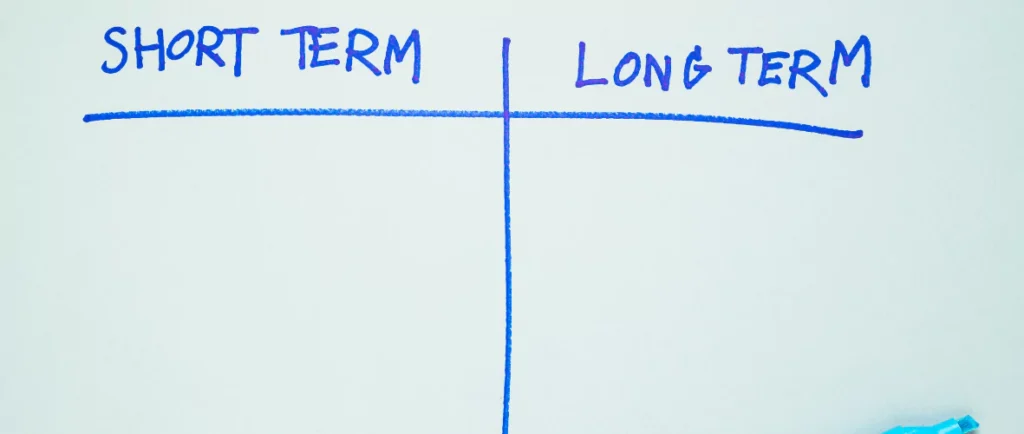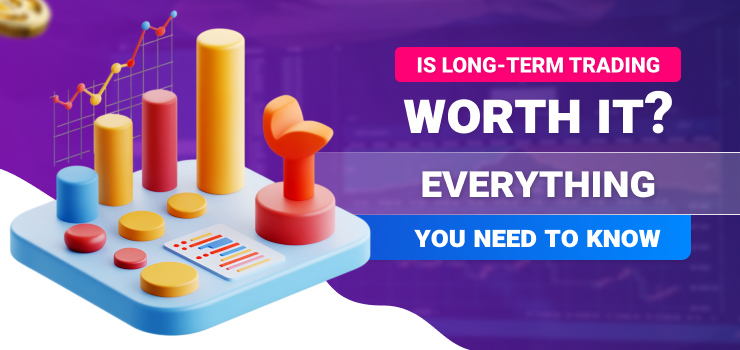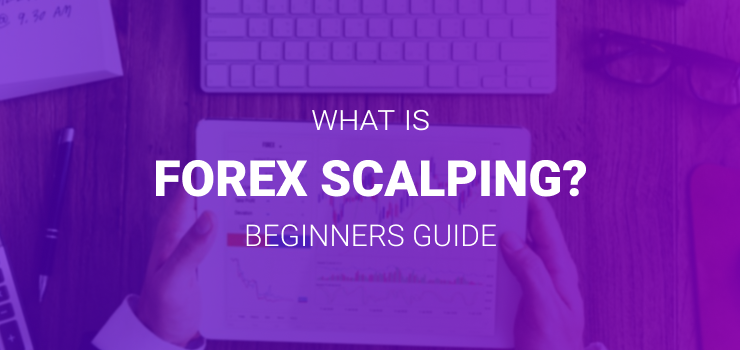One of the most prevalent investment challenges is picking between short-term and long-term trading. Should you surf the market’s waves and chase rapid returns, or should you be patient and let your investments grow over time? Long-term trading is an interesting topic for many individuals, especially those searching for a less stressful and more reliable means to earn money. But is it really worth it? In this article, we will discuss all you need to know about long-term trading, including its benefits, drawbacks, and how to make it work for you. By the end, you’ll know whether this approach aligns with your financial goals or not.
What Is Long-Term Trading?
Let’s start with the basics before getting into the details. Long-term trading is a technique in which investors buy assets (e.g., stocks, bonds, mutual funds, or ETFs) and hold them for a lengthy period. This timescale typically lasts several years, frequently five or more, however many investors aim for decades if their goal is retirement savings or inherited wealth. Unlike short-term trading, which focuses on capitalizing on rapid market changes, long-term requires patience and the slow growth of investments over time.
Consider it like planting a tree. When you plant a seed, you do not expect it to grow into a massive oak overnight. You cultivate it, water it, and allow it time. Similarly, long-term investing entails planting your financial seeds and seeing them grow consistently. By staying invested, you allow compounding to work its magic, increasing your gains over time. For many people, this technique is less stressful and more fulfilling than following the ups and downs of short-term trading.
Why Do People Choose Long-Term Investing?
Long-term trading appeals to many investors, including beginners and experienced traders. But why is it such a popular choice? One of the most significant factors is the power of compounding. When you stay invested for a long time, your returns produce more returns, resulting in a snowball effect. For example, if you put $10,000 in a company that grows at 8% per year, your investment will be roughly $46,610 after 20 years, assuming no extra contributions. This is the wonder of allowing time to work for you.
Another reason many choose long-term is the reduced stress it offers. Let’s be honest—short-term trading can feel like an emotional rollercoaster. Prices swing up and down daily, and it’s easy to get caught up in the noise. Long-term traders, on the other hand, take a step back and focus on the bigger picture. They aren’t concerned with short-term volatility because they know markets tend to recover and grow over time.
Additionally, long-term investing is cost-effective. Frequent buying and selling can rack up significant transaction fees, not to mention potential tax implications. By holding onto your investments for years, you minimize these costs and keep more of your hard-earned money.
The Benefits of Long-Term Trading

The benefits of long-term trading are appealing, particularly for people who want a consistent and dependable approach to investment. One of the most important advantages is financial growth. Historically, markets have shown an upward trend throughout time. Since its inception, the S&P 500 has averaged an annual return of roughly 10%. While there will always be periods of fall, such as economic downturns or global catastrophes, markets have consistently recovered and rewarded patient investors.
Another major benefit is the tax advantages associated with long-term investing. In many countries, investments held for more than a year qualify for long-term capital gains tax rates, which are typically lower than the rates for short-term trading. This means you get to keep more of your profits when you sell your investments after holding them for the long term.
Perhaps one of the most underrated perks is the time efficiency of long-term investing. Unlike short-term traders who constantly monitor the market and make split-second decisions, long-term traders can take a hands-off approach. Once you’ve chosen your investments, you can focus on other aspects of your life while your portfolio grows in the background. This makes long-term trading particularly appealing to busy professionals or those who prefer a low-maintenance investing strategy.
Challenges of Long-Term Trading
While long-term trading offers numerous benefits, it’s important to recognize that it’s not without challenges. One of the most significant hurdles is the patience required. In a world that often prioritizes instant gratification, waiting years—or even decades—for significant returns can feel frustrating. Markets don’t always move in a straight line, and during periods of volatility, it can be tempting to abandon your long-term strategy in favor of short-term gains. However, those who stay the course are often rewarded.
Another challenge is dealing with market downturns. Even long-term investors are not immune to the effects of economic crises or unexpected market crashes. The 2008 financial crisis and the 2020 COVID-19 market collapse are prime examples of events that caused widespread panic among investors. While history shows that markets typically recover, the uncertainty during these periods can be nerve-wracking, especially for those new to investing.
There’s also the opportunity cost to consider. By committing your money to long-term investments, you may miss out on other opportunities that could offer higher or faster returns. However, this is often a trade-off that long-term investors are willing to accept in exchange for stability and consistent growth.
How to Succeed in The Long Run
Success in long-term trading requires more than just buying and holding investments. It’s about adopting the right mindset and implementing strategies that align with your financial goals. One of the most effective ways to succeed is through diversification. By spreading your investments across different sectors, industries, and asset classes, you reduce the risk of being overly dependent on the performance of a single asset.
Another key to success is focusing on quality investments. This means researching companies or funds with strong fundamentals, such as consistent earnings growth, low debt levels, and a competitive advantage in their industry. These are the types of investments that are more likely to withstand market fluctuations and deliver solid returns over time.
Reinvesting dividends is another powerful strategy for long-term growth. Many companies pay dividends to shareholders, and by reinvesting these payments back into your portfolio, you can accelerate the compounding process. Additionally, staying consistent with your investment contributions—even during market downturns—can help you take advantage of discounted prices and maximize your returns.
Finally, it’s crucial to stay disciplined and tune out the noise. Markets can be unpredictable, and there will always be headlines that spark fear or excitement. Successful long-term traders know how to stay focused on their goals and avoid making emotional decisions.
Long-Term Trading vs. Short-Term Trading

Comparing long-term trading to short-term trading is like comparing running a marathon to sprinting. Both require skill and strategy, but they cater to different goals and personalities. Long-term investing is ideal for those who value stability and are willing to wait for their investments to grow. It’s less stressful, requires minimal effort, and benefits from the market’s natural upward trajectory over time.
Short-term trading, on the other hand, is fast-paced and requires constant attention. It’s often driven by technical analysis and quick decision-making to capitalize on short-lived market trends. While it can be highly rewarding for experienced traders, it’s also riskier and more stressful. Ultimately, the choice between the two depends on your risk tolerance, time availability, and financial goals.
Is Long-Term Trading Worth It?
So, is long-term trading worth it? For most investors, the answer is a resounding yes. The strategy allows you to build wealth steadily over time, leveraging the power of compounding and the market’s historical resilience. It’s a less stressful and more cost-effective way to invest, making it particularly appealing to those with long-term financial goals, such as retirement or funding a child’s education.
However, it’s important to approach long-term investing with realistic expectations. There will be ups and downs along the way, and success requires patience, discipline, and a commitment to your strategy. If you’re willing to stay the course and focus on the bigger picture, long-term investing can be one of the most effective paths to financial success.
Conclusion
At its core, long-term trading is about playing the long game and trusting the process. While it may not offer the adrenaline rush of short-term trading, it provides a reliable and proven way to grow your wealth over time. It’s not without its challenges—patience, market volatility, and opportunity cost are all factors to consider—but the rewards often outweigh the risks. If you’re looking for a low-maintenance, stress-free investment strategy that aligns with your long-term goals, this approach is certainly worth considering. Remember, investing is a journey, not a sprint. Plant your financial seeds today, and let time and compounding do the rest.
FAQs About Long-Term Trading
1. How long is considered “long-term” in trading?
Long-term typically refers to holding investments for at least 3-5 years, though many aim for 10+ years for maximum growth.
2. Does long-term trading reduce risk?
While it doesn’t eliminate risk, long-term trading reduces the impact of short-term market volatility, making it less risky over time.
3. Can I start long-term trading with a small budget?
Absolutely. Thanks to fractional shares and investment apps, you can start investing with as little as $50 or $100.
4. What’s the best asset for long-term trading?
Stocks, ETFs, and index funds are popular choices due to their potential for steady growth and diversification.
5. How do I stay motivated during market downturns?
Focus on your long-term goals, avoid checking your portfolio too often, and remind yourself that markets historically recover over time.



